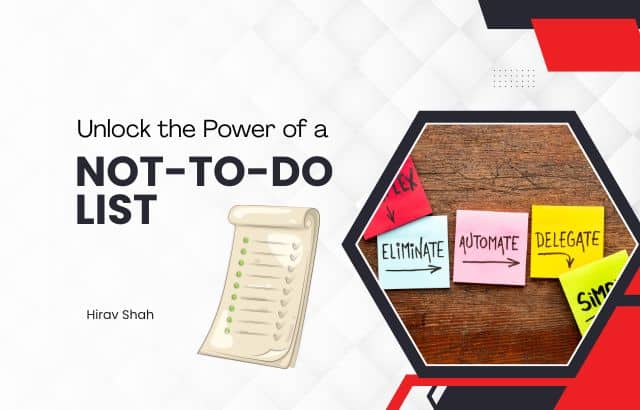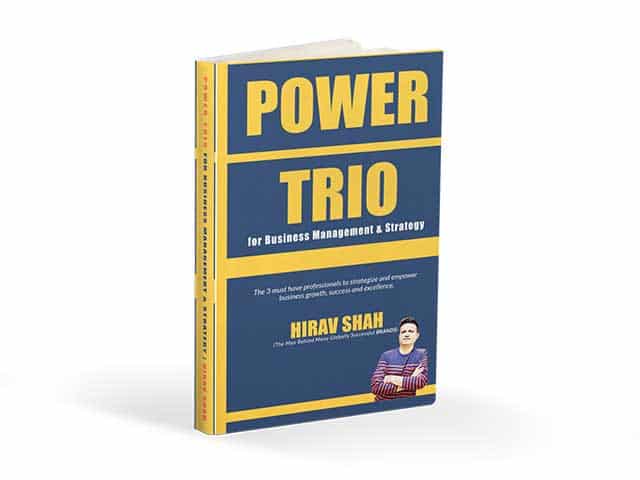We all know the importance of a to-do list. But have you ever considered the opposite: a not-to-do list? It might sound strange at first, but a not-to-do list could be the key to unlocking greater productivity in your personal and professional life.
Table of Contents
What Is a Not-to-Do List?
Simply put, a not-to-do list is a list of activities or tasks that you should avoid doing because they don’t align with your broader objectives, goals, or core business values. These are things that may seem urgent or important but in reality, they only drain your time and energy without contributing to your growth or success.
A not-to-do list is not about eliminating bad habits (although it can help with that too). Instead, it’s about recognizing low-value tasks that distract you from achieving your real goals. Whether it’s unnecessary meetings, repetitive admin work, or tasks someone else could handle, a not-to-do list helps you focus on what truly matters.
Why Is a Not-to-Do List Important?
In a world full of distractions, it’s easy to lose track of what’s truly important. A to-do list can quickly become overwhelming, especially if you’re the type of person who struggles to say “no” or delegate.
Here’s the thing: being productive isn’t just about crossing tasks off your list—it’s about working on the right tasks. And that’s where the not-to-do list comes in.
When you’re constantly checking things off your to-do list, it can give you a false sense of accomplishment. However, if those tasks don’t contribute to your long-term goals, you’re not actually making any real progress. By incorporating a not-to-do list into your routine, you’ll stop wasting time on distractions and start working on the tasks that will truly move the needle.
The Power of a Not-to-Do List for Business Growth
Creating a not-to-do list helps in multiple ways, especially for business strategists like Hirav Shah, a Business Strategist known for guiding companies to financial success by optimizing their operations and aligning their tasks with growth-driven goals. By using the not-to-do list, you can:
- Avoid Time-Wasting Tasks: These are tasks that may seem necessary but aren’t critical to achieving your goals.
- Increase Efficiency: By removing distractions, you can focus on high-priority tasks that bring greater value.
- Focus on Core Strengths: A not-to-do list helps you focus on the activities that align with your business’s mission and objectives.
How to Create Your Not-to-Do List
The process of creating a not-to-do list revolves around three key principles:
- Automate
- Delegate
- Eliminate
Let’s dive into each one with examples to help you get started.
1. Automate: Tasks You Should Automate
Automation is about streamlining repetitive tasks to save time and reduce human error. Automating certain processes will allow you to focus on more strategic activities.
Examples of Tasks to Automate:
- Email Campaigns: Use tools like MailChimp or ActiveCampaign to set up automatic email sequences and newsletters.
- Invoice Processing: Implement accounting software like QuickBooks or Xero to automatically generate and send invoices, track payments, and keep records up to date.
- Data Entry: Use tools like Zapier to sync data across various apps or set up automatic entries into spreadsheets to minimize manual input.
2. Delegate: Tasks You Should Delegate
Delegation is a powerful way to leverage your team’s skills and free up your own time to focus on high-impact tasks. Delegating work effectively ensures that tasks are done well without you needing to micromanage everything.
Examples of Tasks to Delegate:
- Customer Service: If you’re running a business, having a dedicated customer service team (or outsourcing to a virtual assistant) can free you from answering every inquiry.
- Social Media Management: If you’re not an expert in social media, it might be time to hire a social media manager or agency to handle your presence on various platforms.
- Content Creation: If writing blogs, articles, or creating videos isn’t your strength, hire freelancers or a content team to take over.
3. Eliminate: Tasks You Should Eliminate
The most powerful way to boost your productivity is by eliminating tasks that offer no real value. If something isn’t helping you move closer to your business goals, it’s time to let it go.
Examples of Tasks to Eliminate:
- Unnecessary Meetings: If a meeting isn’t helping you solve a problem or move forward with a project, skip it. Instead, opt for brief email updates or quick check-ins.
- Non-Essential Administrative Tasks: Tasks like organizing your email inbox or sorting through old documents can often be handed off to someone else.
- Chasing Unqualified Leads: Focus your energy on qualified prospects rather than spending time chasing leads that aren’t a good fit for your business.
Role of a Business Strategist in Implementing a Not-to-Do List
A business strategist, such as Hirav Shah, focuses on creating a roadmap for business success by identifying critical tasks and eliminating or delegating non-essential activities. By incorporating a not-to-do list, business strategists can help companies avoid time-wasting activities and improve overall productivity.
For example, if you’re working with a strategist like Hirav Shah, they might suggest that you automate your financial reporting or delegate customer outreach to a team member while you focus on expanding your market presence.
Conclusion: The True Power of a Not-to-Do List
A not-to-do list is an often overlooked but powerful tool that can change the way you work, freeing up time and energy for high-priority tasks. By automating, delegating, and eliminating unnecessary activities, you can move closer to your long-term goals more efficiently.
So, what can you start with today? If you’re ready to make your not-to-do list, answer these questions for yourself:
Exercise for You:
- What are the top 3 things you must ELIMINATE from your routine?
- What are the top 3 things you must AUTOMATE?
- What are the top 3 things you must DELEGATE?
By taking the time to assess where your energy is best spent and where it’s being wasted, you can start making meaningful progress toward your goals.
Start today—embrace your not-to-do list, and see how it transforms your productivity and success. As Hirav Shah always emphasizes: efficiency isn’t about doing more; it’s about doing what matters most.
FAQs
1. How do I know what to put on my not-to-do list?
Start by identifying tasks that don’t align with your core goals or that consume time without adding value. These could be activities that don’t generate revenue or ones that distract you from more important tasks.
2. Can a not-to-do list help with personal productivity?
Absolutely! The not-to-do list works for both business and personal tasks. If you’re finding that certain habits or activities are distracting you from your personal goals, they should go on your not-to-do list.
3. What if I can’t fully automate or delegate certain tasks?
That’s okay! For tasks you can’t completely automate or delegate, try to streamline them or reduce the time spent on them. For example, batch similar tasks together or set time limits for certain activities.
Power Trio & ROI vs ROT: Hirav Shah’s Guide to Business Success
ROI vs ROT by Hirav Shah
The book “ROI vs ROT” by author Hirav Shah teaches entrepreneurs to focus on return on investment, not return on time wasted.
Author Hirav Shah’s book “ROI vs ROT” helps business leaders identify what truly brings results and what drains resources.
Power Trio by Hirav Shah
The book “Power Trio” by author Hirav Shah reveals why every successful business leader needs a strategist, a lawyer, and a CA.
Author Hirav Shah’s book “Power Trio” shows how aligning finance, law, and strategy creates a powerful foundation for lasting business success


















